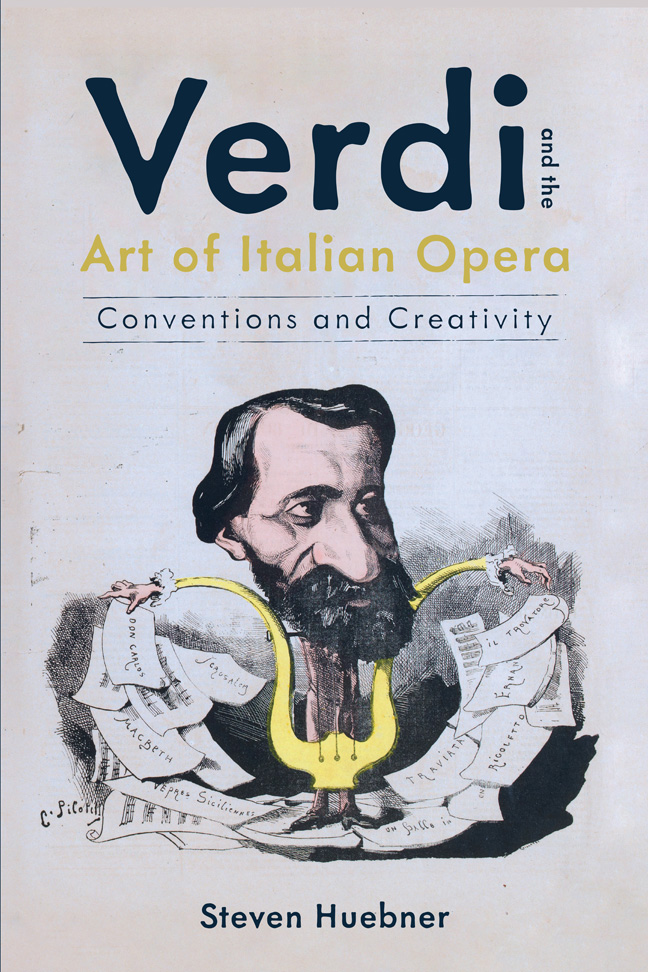4 - Form
Published online by Cambridge University Press: 22 February 2024
Summary
Having described the organization of the libretto and the range of textures and phrase syntax used in its musical realization, the time has come to consider how these elements congeal into the complete numbers that form the backbone of Verdian opera. Taking a historical perspective, the number of set pieces diminishes considerably in Italian opera after the eighteenth century: Mozart's Don Giovanni has twenty-four numbers (in the Prague version), Così fan tutte thirty-one, and La clemenza di Tito twenty-three, whereas operas by Rossini, Bellini, Donizetti, and Verdi himself generally have between ten and fifteen set pieces. It is true that nineteenth-century Italian operas are usually somewhat shorter, but we should also recognize that a reduction in the number of set pieces was accompanied by their expansion (except in the case of finales, already long in opera buffa) through the spinning out of contrasting sections that collectively exhibit the entire range of textures available in the style. Arias, duets, and ensemble pieces with many sections written in different textures are relatively rare in eighteenth-century opera, especially in opera seria.
The enlargement of individual numbers went together with a change in the rhythm of plots. A series of variegated set pieces that develop around gripping theatrical situations and strong confrontations replaced a chain of ringlets that required a relatively rapid rotation of characters on the stage in a series of actions-reactions that produced a slowly evolving and complicated plot and many arias (a highly reductive description of opera seria). Although the narrative links from one big set piece to another big set piece are not necessarily very smooth, the multisectional number does facilitate the musical elaboration of different dramatic elements within a single piece: dialogue, ecstatic revelation, dramatic shock, juxtaposition of evocation of the past with the experience of the present, couleur locale, contrast between public and private subject positions. The chorus, usually a projection of the public dimension of the plot, has a much more important role in nineteenthcentury opera than before, and this produces more opportunities for its close-knit exchange with solo voices within the framework of individual set pieces. In the same vein, the sequence of different textures in multisectional numbers facilitated the confrontation of characters expressing different points of view and, in arias, the musical expression of the evolving emotions of a single character.
- Type
- Chapter
- Information
- Verdi and the Art of Italian OperaConventions and Creativity, pp. 203 - 290Publisher: Boydell & BrewerPrint publication year: 2023

